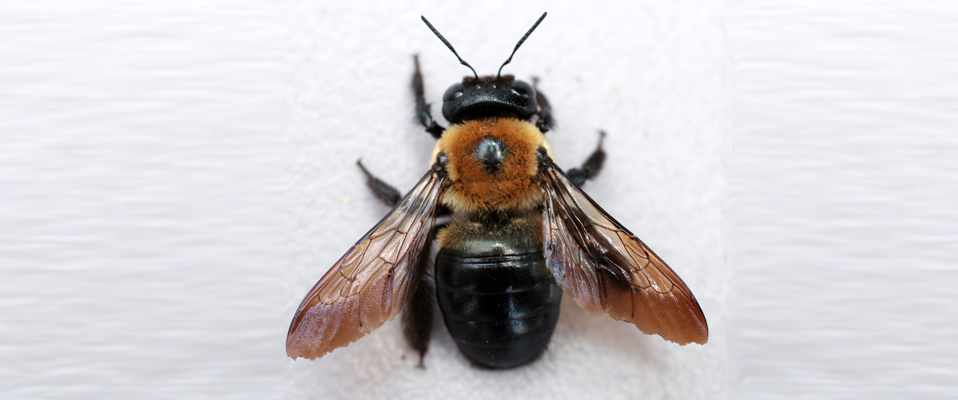Carpenter Bee
Download PDF
QUICK STATS:
Color:
Yellow and blackShape:
Robust, ovalSize:
1/2 -1 inch longRegion:
Found throughout the U.S. as well as Southern Ontario
OVERVIEW:
Carpenter bees get their common name from their habit of boring into wood to make galleries for rearing their young. Carpenter bees resemble bumblebees but their abdomen is largely bare and shiny.PREVENTION:
• Carpenter bees prefer bare wood, so painting and staining wood can sometimes deter them.• Routinely inspect wood on your property for signs of a carpenter bee infestation, including round, smooth holes.
• In some cases, carpenter bees will attack stained or painted wood. If you suspect a carpenter bee infestation, contact a licensed pest professional.
HABITS:
Carpenter bees are not social insects and do not live in nests or colonies. The adults over-winter, typically in abandoned nest tunnels. In the spring, they emerge and feed on nectar. To excavate galleries, female carpenter bees bore circular holes the same diameter as their bodies straight into wood, and then turn to tunnel along the grain of the wood.THREATS:
Carpenter bees are a serious property threat, and can cause structural damage over time if left untreated. They prefer weathered and unpainted wood. Male carpenter bees can be territorial and may hover in front of one’s face aggressively, but they have no stinger and these actions are merely for show. Female carpenter bees do have a potent sting, but it is rarely used.DID YOU KNOW? Carpenter bees…
• will chew a tunnel into a piece of wood to build a nest gallery. The bits of wood they chew and deposit outside the nest are called frass.• stingers are not barbed, so the female can sting over and over again.
• tunnel openings usually look about one or two inches deep, but they can be up to 10 feet long.


